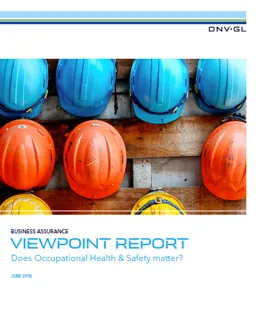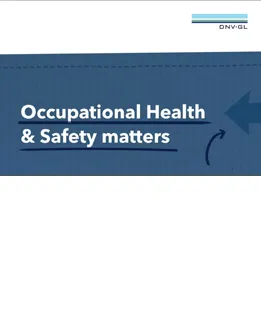Safeguarding the well-being of workers and laws and regulations are the top drivers for occupational health and safety – that’s according to 1,700 industry professionals surveyed by DNV GL.
The top occupational health and safety drivers listed in the survey were safeguarding the well-being of workers (82%) and laws and regulations (79%). Other drivers score significantly lower, with internal policies, business continuity and brand reputation following next.
The main risks are attributed to machines & equipment (66%) and the working environment (62%). Compared to a survey conducted on the same topic in 2014, risks from machines & equipment have grown by 29 percentage points and risks from the working environment have grown by 32 percentage points. This may be due to more specific legislation related to machines and working environments over recent years.
An improved ability to comply with laws and regulations and reduction in the number of injuries are naturally listed as the top benefits from the implemented safety actions, and 55% of the companies indicate that the benefits from implementing mitigating actions are greater than the costs. This number increases to 65% for companies with a certified occupational health and safety management system and 75% for companies identified as leaders.
When looking at how companies approach this from a strategic perspective, 50% of respondents state that occupational health & safety is highly relevant to their overall business strategy, and this figure increases to 62% for large companies and 63% for certified companies.
For small companies (less than 50 employees), the picture is different. 41% report that the benefits exceed the costs and 43% state that occupational health and safety is highly relevant to their business strategy. And while 52% of large companies want to increase investments over the years to come, only 33% of small companies say the same.
In total, this indicates that small companies might not be paying sufficient attention to occupational health and safety matters. This could be a risk, since small and medium sized companies (SMEs) are the predominant enterprise form in most regions, accounting for approximately 99% of all firms and 70% of the jobs in the OECD area.1
“Anecdotal data from customer assessments shows that the investment required to renew facilities and machinery is one of the biggest concerns for small and medium sized companies. However, significant improvements can often be achieved through better processes and a stronger focus on behaviour-based safety. Going through a certification process is often the easiest way for SMEs to improve workplace safety without excessive costs,” comments Luca Crisciotti, CEO of DNV GL – Business Assurance.
[1] “Enhancing the contributions of SMEs in a global and digitalised economy”, OECD 2017.


